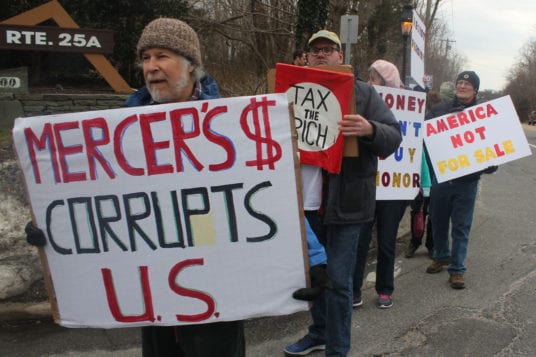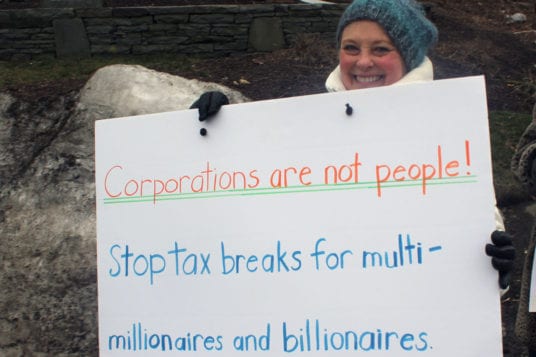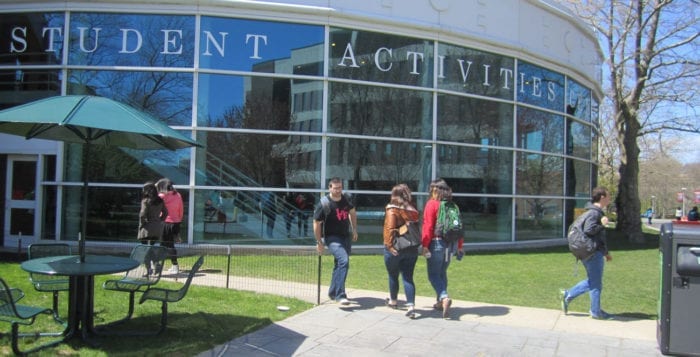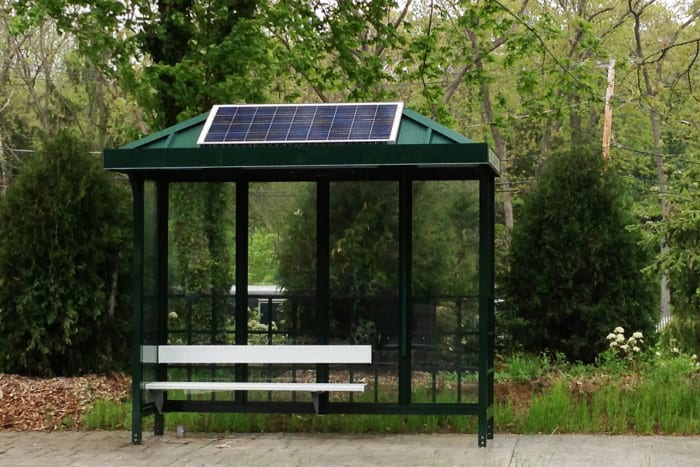A large group of political protesters paraded along busy Route 25A in East Setauket March 24, aiming their outcry not just at the administration in Washington, D.C., but a reclusive hedge fund billionaire by the name of Robert Mercer residing in their own backyard.
Mercer, the co-CEO of an East Setauket-based investment firm and resident of Head of the Harbor, has been under the spotlight for being the money behind President Donald Trump’s (R) administration, maintaining a major influence on the White House’s agenda, including its strict immigration policies.
Mercer, a major backer of the far-right Breitbart News, reportedly contributed nearly $13.5 million to the Trump campaign and, along with his daughter Rebekah, played a part in securing the leadership positions of chief strategist Steve Bannon and campaign manager Kellyanne Conway.
Regarding Mercer as the administration’s puppeteer-in-chief, protesters assembled to bring public attention to the local family’s power in the White House and the influence “dark money” has had in America.
“I think we’ve reached a worrisome point in our history that a single individual can have the kind of influence that Robert Mercer has, simply because he has a huge amount of money,” Setauket resident John Robinson said. “I think he’s an extremely dangerous individual with worrisome views. He just wants government to not be around so people like him and companies like his can plunder to their heart’s content.”
The short march, made up of several protest groups including the North Country Peace Group, began at the CVS shopping center and landed at the bottom of the hill where Mercer’s Renaissance Technologies sits. Leading the march were local residents wearing paper cutout masks of Trump, Bannon and U.S. Rep. Lee Zeldin (R-Shirley), each strung up like puppets and controlled by a resident in a grim reaper outfit, representing Mercer.
Equipped with signs reading “Mercer $ Bought Trump We Pay the Price” and “Resist Mercer,” Long Island residents stood in front of the investment firm’s office and participated in a mock debate with the faux-political figures. The topics ranged from Mercer’s denial of climate change to Zeldin’s stance on the now-pulled American Health Care Act.
Sue McMahon, a member of the grassroots coalition Building Bridges in Brookhaven, had only recently learned about Mercer’s heavy involvement in Trump’s presidency and his close proximity and participated in the march to expose him.
“I’m very concerned we have a person like this among us who holds the power of the Republican Party,” McMahon said.
She said she’s particularly troubled by the administration’s overwhelming ignorance of environmental issues, its emphasis on money and the extreme views of Breitbart News.
“This is not the America I grew up with, this is not what I want,”she said. “I’m not normally a protester, but I believe we all have to stand up now.”
Paul Hart, a Stony Brook resident, said he was there to support democracy.
The American people have lost representative government because campaign contributions are now controlled by the rich, he said, and it’s hard to think about the needs of constituents when they don’t contribute in a way that’s beneficial to a politician’s re-election.
“The average person has absolutely no voice in politics anymore,” Hart said. “Bbefore, we had a little bit, but now, we’re being swept aside.
One protester referred to Mercer as one small part of a larger picture, and expressed concern over a growing alt-right movement throughout the country that prefers an authoritarian government that runs like a business.
“I guess that’s what Trump is all about,” said Port Jefferson resident Jordan Helin. “But we’re seeing what the country looks like when it’s being run like a business, [and it’s scary].”
Myrna Gordon, a Port Jefferson resident and member, said her organization has held previous actions against Renaissance Technologies, and was among the first grassroots groups on Long island to take notice of how entrenched in the White House Mercer and his family are. According to her, Rebekah Mercer is in many ways more powerful than her father.
“We cannot take the focus off [Rebekah Mercer] right now, because she’s become a powerful force in this whole issue of money in politics, buying candidates, everything we see in our government,” she said.
Since Robert Mercer is local and lives in our community, she added, it’s time that we showed our strength and our voice regarding what this money is doing to our country.


















